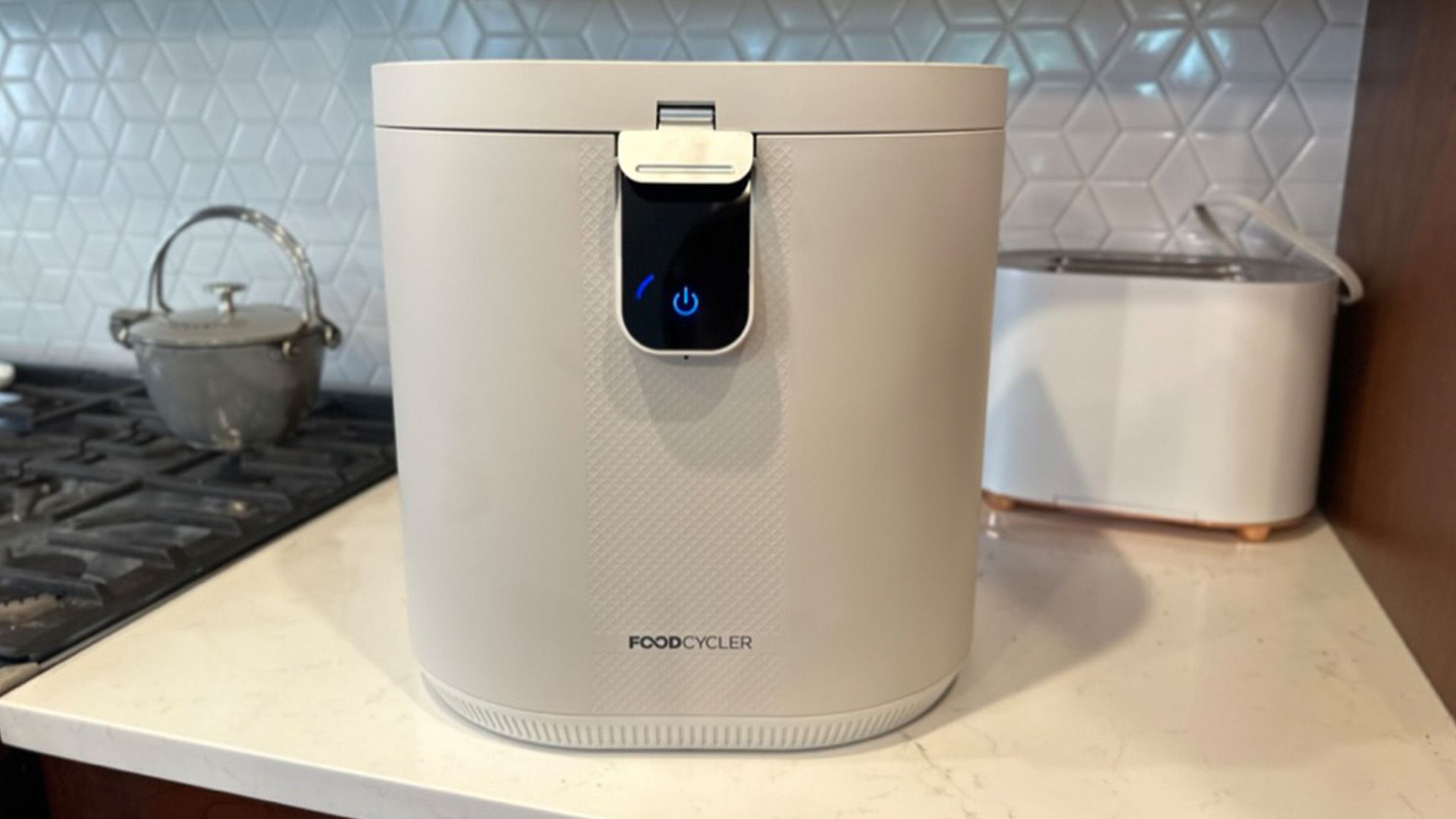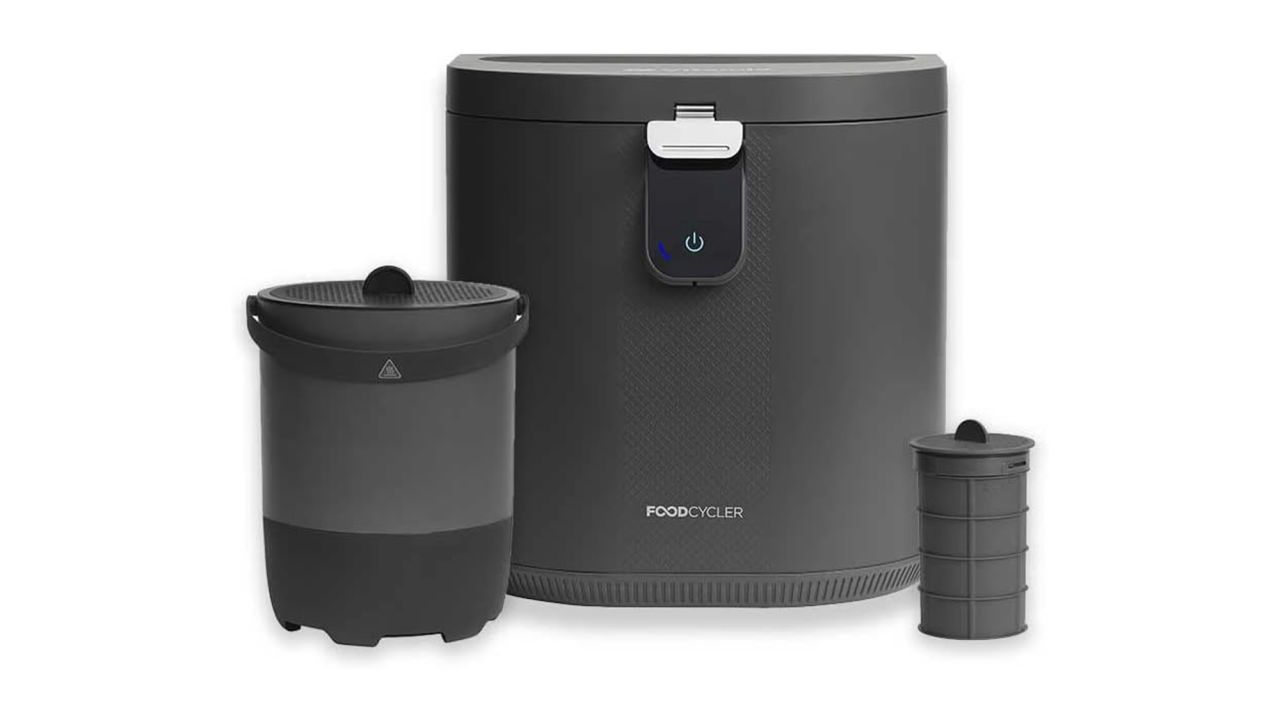Vitamix may be best known for its blenders, but the company continues to innovate when it comes to food recycling. This spring, Vitamix debuted its third-generation FoodCycler machine, the FoodCycler by Vitamix Eco 5, designed to convert food waste into a soil fertilizer with the push of a button.
Food waste contributes significantly to greenhouse gas emissions, and while — like with other consumables — the best solution is to minimize the excess to begin with, it’s also important to divert any food waste we do create from landfills. The US Environmental Protection Agency (EPA) estimates that food makes up 24% of trash in municipal landfills —?more than any other single material —?and in 2019, 96% of household food waste ended up in landfills, combustion facilities or the sewer system. Only 4% was composted.
Enter: countertop composting machines. The Vitamix FoodCycler doesn’t technically compost what you put in it, but it serves a similar purpose by dehydrating the organic matter and grinding it down to become a soil amendment, or Recycled Food Compound (RFC), as the company dubbed it. You can then use the end product as a fertilizer in your yard, garden or planter boxes (at a ratio of 11 parts soil to 1 part RFC).
The FoodCycler by Vitamix Eco 5 is a powerful machine for diverting household food waste from the landfill and creating nutrient-rich fertilizer instead. The minimalist appliance can fit nicely on most countertops, grinding down organic matter with barely any noise.?
What we liked about it
As far as I’m concerned, the best part about the Vitamix FoodCycler is that it fulfills its purpose: reducing the amount of household food (and some other organic) waste that gets thrown away. I do have a garbage disposal installed in my sink, so before I started composting (with a private service) I put most of my food waste down the drain. While the disposal is generally considered better for the environment than the trash, it can still put a strain on wastewater systems, and it requires a lot of water to get the job done. With the FoodCycler, I can divert almost all of my otherwise sewage-bound scraps plus those that could never go down the drain to begin with (like banana peels and avocado pits).
In my experience, countertop composting machines can’t accommodate as vast a range of materials as actual compost piles, the latter of which have the benefit of time to fully process the waste. That said, while you can’t put bioplastics, paper egg cartons or large animal bones in the FoodCycler Eco 5, the device does allow for an impressive list of food items (as well as “a small amount of paper towel/tissue,” per the manual). In addition to the usual produce suspects, the Eco 5 can also process tougher things like avocado pits and poultry bones.
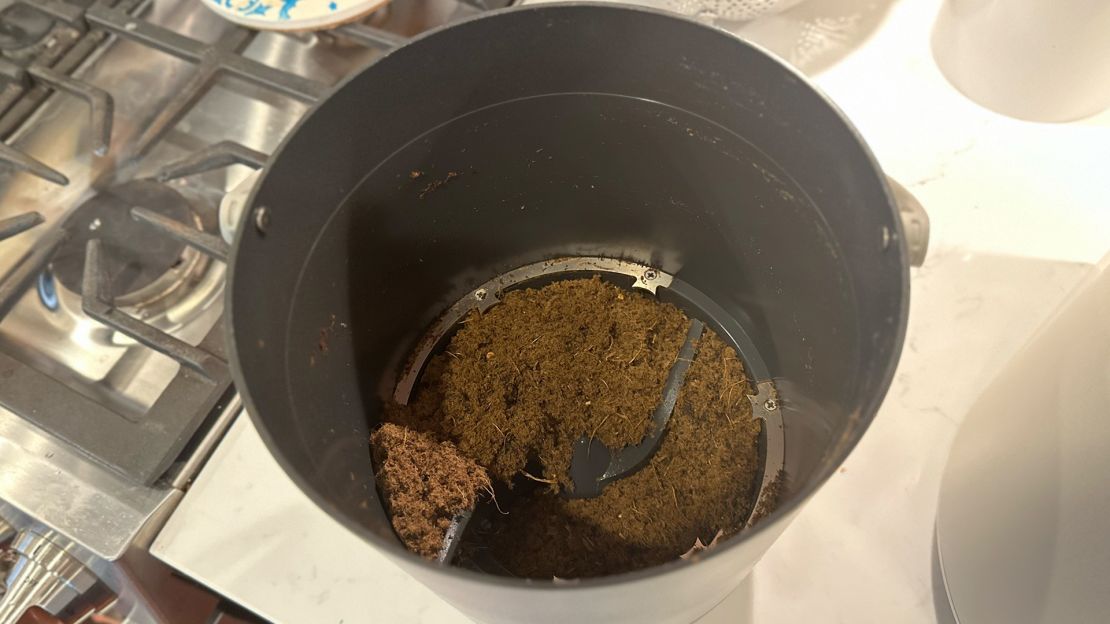
The end product isn’t technically compost, but it’s impressively close for how quickly the machine breaks down waste. You can use the output — dubbed Recycled Food Compound (RFC) by Vitamix — as a fertilizer, mixing it with soil at a ratio of one part RFC to 11 parts soil and use. Or, if you don’t have a need for that, you can toss it in your backyard or neighborhood green bin, where it will get further broken down into actual compost.
The FoodCycler Eco 5 bucket has a 5-liter capacity — double that of its predecessor — which means I don’t have to be constantly running it to keep up with our discards. I only live with one other person, but it’s easy to see how the bigger bucket would be convenient for a larger household (and, in fact, I’ve been able to put it to the test here and there when hosting family or friends).
For as impressive as the transformation from waste to fertilizer is, the FoodCycler Eco 5 is incredibly easy to use. Once you fill the bucket to the max fill line, all you have to do is close the lid and press the on button. The machine takes it from there, dehydrating and grinding away for anywhere from (approximately) four to nine hours, depending on specific contents.

While it’s bigger than most countertop appliances, it can still fit under most standard cabinets without being an eyesore. Vitamix stepped up its design game with this second-generation machine. Whereas the original FoodCycler FC-50 had a fairly industrial look, this one feels elevated and sleek with its matte finish, minimal branding and simple on/off touch screen button. Plus, it comes in two different colors (white and black), so you can choose what works best in your home.
You don’t have to worry about disruptive noise, either. For most of each cycle I’ve run, the only sound was a low buzz or hum —?I couldn’t even hear it from the next room over —?with the exception of when an avocado pit was included, in which case it made a sort of knocking sound in the early stages. And thanks to the carbon foam liner in the unit lid and the carbon pellets in the refillable filter, there’s rarely a discernible odor. (Sometimes, particularly early in a cycle, I’ll smell an earthy aroma as the machine works.) The FoodCycler even comes with a separate bucket lid with replaceable carbon filters; even if you don’t keep the whole machine on your counter, you can keep the bucket and lid there for collecting food scraps and not worry about odor.
What we didn’t like about it
The biggest downside of the FoodCycler is the cost: $600 is quite expensive for a countertop appliance. If you have the space for a backyard compost pile or bin, you’d likely spend much less than that both initially and over time. Private composting services can range significantly in price, but I personally paid $288 and $180 per year respectively for the two different services I’ve used in Chicago —?meaning it would take more than two years of using the FoodCycler before it became “cheaper.” And that’s not even factoring in the ongoing costs of replacing the carbon filter pellets ($25 for one packet, and you’re advised to replace them every three to six months or approximately 500 cycle hours — an indicator light will alert you), the unit lid carbon foam liner (it’s recommended to replace it every three to four months “or until odors are detectable,” though replacements aren’t currently on the Vitamix website) and the collection lid filters ($12 for a set of three, and it’s recommended to replace them every three-to-four months).
Vitamix also sells FoodCycler Foodilizer Tablets that you mix with water and spray on your fertilized soil for “beneficial bacteria (i.e., a soil probiotic) to promote plant health.” The machine doesn’t come with any tablets, so there’s no free trial, which is a bummer. I chose not to buy them; to be honest, I’m not a savvy enough gardener at this point to even be able to tell how much or how well they’d work on my plants. If you do want to try them out, a two-pack costs $25; according to the website, one 20-ounce spray bottle (with one tablet and water) should last an entire planting season.
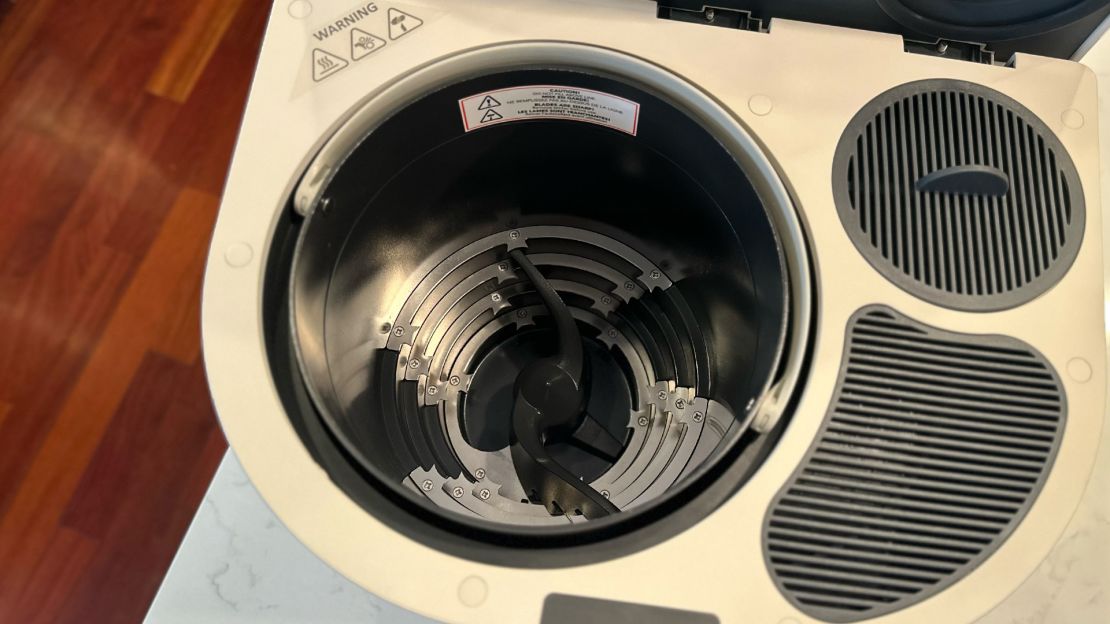
All that said, I’ve found there are some benefits over a private composting service (if your city offers municipal composting, congrats!) —?the biggest one being that I get fertilizer out of it, and I get it right away. I also love the ease of being able to toss my waste into the bucket and operate the device right there in my condo, on my schedule.
The machine comes with a three-year warranty, and Vitamix is known for its high-quality, high-end kitchen devices — I’ve had my Vitamix blender for 10 years now, and it runs just as well as it did on day one — so I’m hopeful I will be using the FoodCycler Eco 5 for much longer than two years without issues.
How it compares
The FoodCycler Eco 5 is an improvement on Vitamix’s FoodCycler FC-50 in almost every aspect — namely the aesthetics (an overall sleeker look), the waste minimization (the refillable filter that takes carbon pellets rather than entire disposable filters) and the bucket capacity. That doesn’t mean the previous generation FoodCycler isn’t worth considering, especially if it takes you a while to collect enough food scraps to fill a five-liter bucket anyway. A price tag $200 cheaper is certainly enticing.
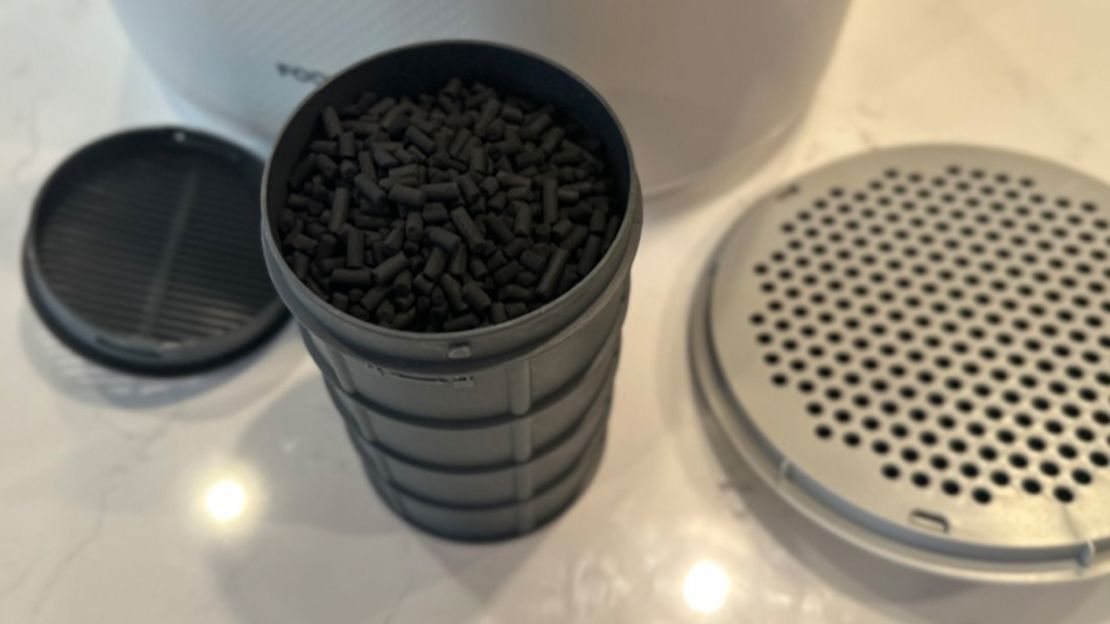
There are a handful of other countertop composting machines on the market, but the most popular seems to be the Lomi, which I have also tested. I wouldn’t peg one as wholly better than the other; rather, they each have unique upsides (and downsides). While the FoodCycler Eco 5 is a pretty good-looking machine, especially compared to the FC-50, I’m still partial to Lomi’s overall more “artsy” shape and look.
It’s also handy that the Lomi can process certain bioplastics and a wider range of paper waste than either Vitamix machine, a benefit of Lomi’s three distinct modes. There’s “Lomi Approved” mode, which allows for the aforementioned non-food items; “Eco-Express” mode, which processes waste in as little as three hours; and “Grow” mode, which takes up to 24 hours but results in the closest output to actual compost. Then again, the Vitamix Eco 5 has the edge when it comes to food waste — particularly avocado pits and certain hard bones. The Lomi price tag falls between the two Vitamix models, starting at $500.
Bottom line
The FoodCycler by Vitamix Eco 5 is definitely a big-ticket item; if your city offers free municipal composting, or you’re able and want to compost on your own or with a private service, you may find those options make more sense for you. But if you don’t have other options for handling your food waste, or you like the idea of processing it right there in your own home —?and getting a nutrient-rich soil amendment as a result —?it can certainly be a worthy investment when it comes to decreasing your household’s carbon footprint.
The device does a big job while taking up a relatively small amount of space and making very little noise. And with the peace of mind of a three-year warranty and Vitamix’s reputation of quality, long-lasting small appliances, this does feel like something you’ll be able to count on using for many years to come.
